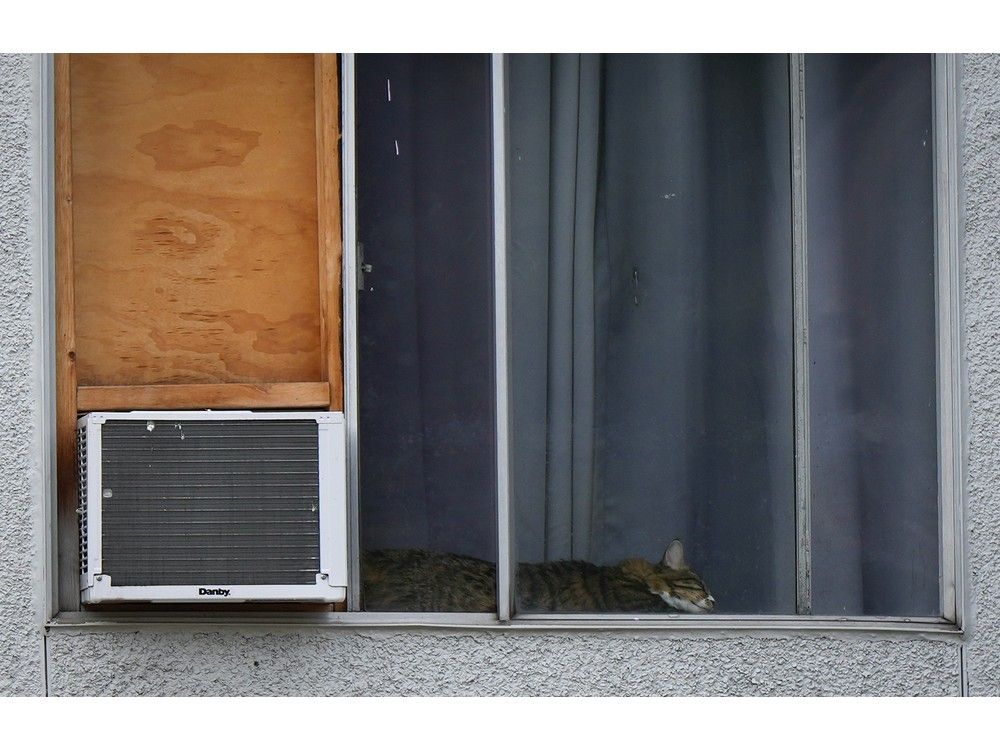
On the anniversary of the deadly 2021 heat dome that killed 619 people, a University of B.C. report calls for bolder action to combat deadly heat extremes and a broader approach to help the most vulnerable.
Recommendations from the report — Too Hot to Think Small: The Case for a Right to Cool in British Columbia — calls for governments to expand and improve air-conditioning-unit distribution programs, make public transit free during heat waves, improve tenancy protections for renters, and for both the B.C. and federal government to put more money into “green” social housing that includes new non-profit housing and retrofitting older housing stock.
Liz Yoon, an assistant professor in the school of kinesiology at UBC and a co-author of the report, says while there have been incremental improvements since the last heat dome, they are not enough.
Only the next heat dome will test those changes, she said.
“I think we should be aiming for no deaths. And I think right now, we’re at a fewer-deaths point,” said Yoon.
The report, produced by the UBC centre for climate justice, recommends what it calls vacancy control, which ties rents to units rather than individual renters so that rents cannot be increased when people move out.
That would remove the incentive to evict people and increase housing security, which in turn reduces heat vulnerability, says the report. Renters can be afraid to push landlords for cooling when they fear losing their unit and facing higher rental costs elsewhere, renters and advocates have said.
The report’s authors did not produce cost estimates for the recommendations.
The focus by governments, advocates and experts on how to reduce the effects of extreme heat on the most vulnerable continues as the forecast this summer is for above average temperatures in Metro Vancouver and extreme heat in the Interior.
Provincial officials have said that extreme heat events similar to the 2021 heat dome are expected to take place once or twice a decade, while heat waves could take place three to four times a year. Earlier this month, the province experienced record-breaking hot temperatures in Metro Vancouver and other parts of B.C.
The UBC report’s recommendations also include the creation of “too-hot-to-work” legislation that would put in place maximum indoor and outdoor work temperatures, noting that migrant agriculture workers face extreme heat in both their work places and in their employer-provided homes.
The report also calls for collecting more robust data that allows the identification of those most at risk. The report noted that the coroner’s report on the 2021 heat dome lacked robust data on race, disability, and socioeconomic status, an omission that both obscures the on-the-ground experience of marginalized groups and undermines fair policy responses.
In one real-life example, the report told the experience of Melissa, a senior living in Vancouver, who uses a wheelchair. Even though she had air conditioning in her bedroom, she ended up “trapped” in that one room during the heat dome. That’s because the rest of the apartment was so hot it was unlivable, she said.
The report noted her experience showed the limitation of one-size fits all solutions, even though well-intended, such as new laws that require temperatures be kept below 26 C in at least one room in a new home.
Yoon said one of the issues with maximum temperatures is that some people are at risk at lower temperatures.
Acknowledging that bringing cooling to older rental buildings will be costly, Yoon said a start could be a shared cooling space in that building, which would be especially helpful for people who can’t make it to cooling centres.
A coroner’s report of the 2021 heat dome found that most people died inside, and that at least two-thirds of those who died had no air conditioning. It also found that those who died were older, had health and mental-health conditions, and lived in socially or materially deprived neighbourhoods.
The B.C. government and municipalities have responded to the recommendations in the coroner’s report: creating a provincial heat alert system in 2022 , ensuring long-term care homes remain cool during extreme hot temperatures, and implementing building code changes in March 2024 that require new homes to provide one living space in each dwelling to not exceed 26 C.
Recently, the province said it had exhausted funding from its $30-million , free, portable, air-condition unit program after delivering more than 27,000 units to those most in need.
There are some cooling pilot projects underway to retrofit existing buildings, but a Postmedia story published last year found that rising temperatures will require billions of dollars to cool aging apartments in Metro Vancouver.
Landlords have said the cost to retrofit existing buildings to cool them is a major impediment because they’re limited in what they can recoup given restrictions on rent increases under B.C. law. Landlord B.C. has said there must be incentives and financial support to retrofit buildings.